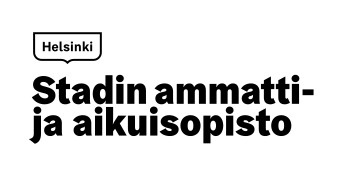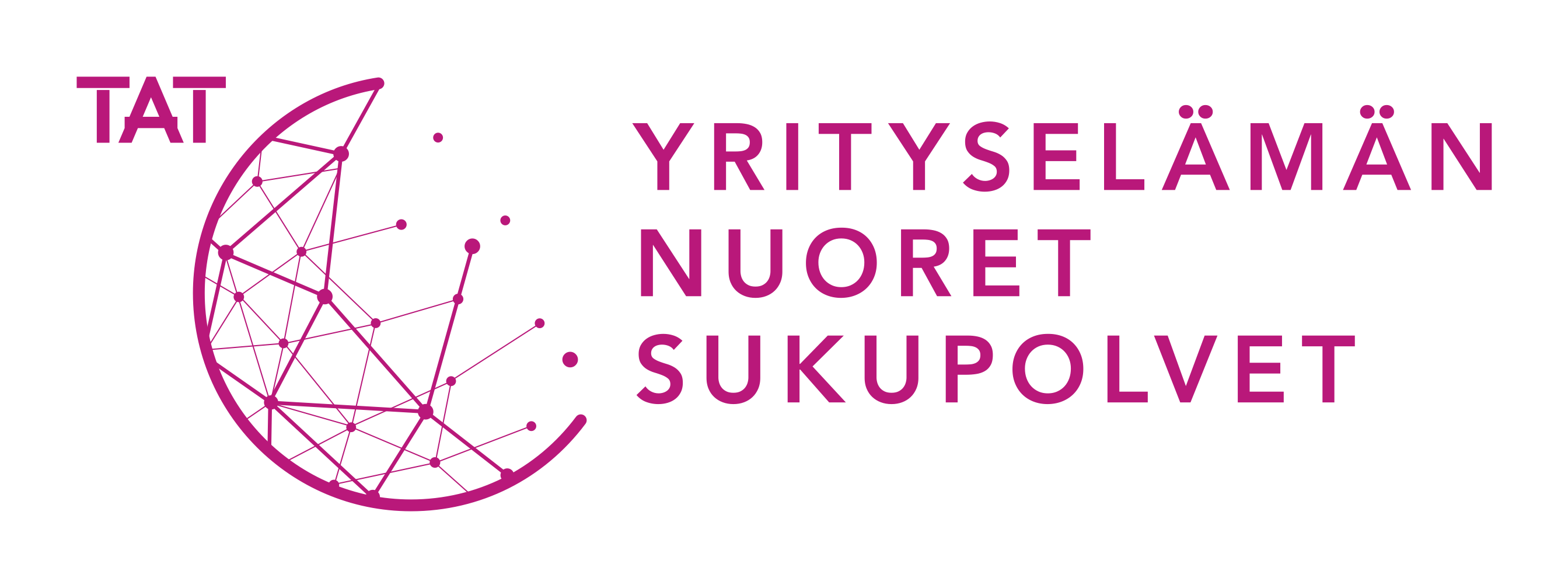Sitra and the project
The Finnish Innovation Fund Sitra was set up in conjunction with the Bank of Finland in 1967, in honour of the 50th anniversary of Finland’s independence. The fund is supervised by Parliament. Sitra’s mission is to build the Finland of the future, anticipate social changes and their impacts, seek new practical operating models and boost business that is aimed at sustainable well-being.
The funding from Sitra facilitated the Kiertoon project and the building of the online learning environment. The funding was used to provide teachers with continuing education through participation in workshops and a closing seminar. Workshops lasting one to two days on the manufacturing of circular economy products were held for students. The project group surveyed the circular economy situation and pedagogy in the textile and fashion industry in Sweden, the Netherlands and Finland. Content production for the Kiertoon online learning environment challenged the project group to consider factors related to the production of content for a digital learning environment.
General information
The project kicked off in November 2017 with a meeting of the project group and a planning meeting. Vantaa Vocational College Varia joined the project in March 2018. The project concluded in November 2018, when the online learning environment was opened to users. The project was supervised by a steering group that convened four times.
The project working group
Helsinki Vocational College and Adult Institute / Textiles and fashion
Elina Tirinen
Project management, Head of Vocational Division
Outi Kankaanpää
Project coordinator, Lecturer in Product Design
Sirpa Suomalainen-Vesanto
Lecturer in Knowledge of Materials
Paula Malleus-Lemettinen / Remake Ekodesign Oy
Teacher and expert in the circular economy (lectures and workshops)
Saimaa Vocational College Sampo / Textiles and fashion
Maija Matikainen
Vocational teacher
Vantaa Vocational College Varia / Clothing
Suvi Laukkanen
Vocational teacher in clothing
Steering group
Finnish Innovation Fund Sitra
Nani Pajunen
Leading Specialist
Riitta Silvennoinen
Specialist
Weecos Oy
Hanna Lusila
CEO
Finnish Red Cross, Kontti Second Hand Department Stores
Sari Nikkola
Director
Tiina Sippula
Chain Manager
Partex, IntoPajat ry
Kirsi Kärkäs-Vaittinen
Development Manager
Häme University of Applied Sciences (HAMK)
Pirjo Seddiki
Principal Lecturer, Design
Helsinki Vocational College and Adult Institute
Elina Tirinen
Project management, Head of Vocational Division
Outi Kankaanpää
Project coordinator, Lecturer in Product Design
Paula Malleus-Lemettinen
Teacher and expert in the circular economy
Saimaa Vocational College Sampo / Textiles and fashion
Maija Matikainen
Vocational teacher
Objectives
The criteria for the new textile and fashion degree came into effect on 1 August 2018. The degree includes an optional part called ‘Making a circular economy product in the textile and fashion industry’, which tackles the current challenge of finding new operating methods for manufacturing and utilising clothing or fabric. This online learning environment was implemented for this part of the degree for the use of providers of textile and fashion education, general education services and other operators in the industry.
The themes of climate change and circular economy come up increasingly often in discussions on textiles and fashion. It is of utmost importance that more efficient utilisation of materials from the perspectives of design, cutting waste and used materials is incorporated into studies.
The objective is to make the increasing of students’ understanding of the length of the lifecycle of finished products, the significance of planning their post-life use, their transformation into reusable materials, and their ecological disposal a natural part of the students’ expertise, without forgetting the business perspective. The new textile and fashion industry occupations created by the circular economy, as well as the opportunities created by the circular economy for profitable business, will continue motivating people to enter the industry in the future.
Implementation
Together with Saimaa Vocational College Sampo and Vantaa Vocational College Varia, Helsinki Vocational College implemented an online learning environment that helps students gain an understanding of the circular economy cycle.
The study package comprises modules and a task bank that can also be used as independent study modules. Additionally, a link to the customised modules in the online business learning environment prepared by Economy and Youth (TAT) has been added to the section ‘Development and commercialisation of circular economy products’. The learning environments are freely available, and teachers can pick suitable sections and tasks for their teaching.
The Kiertoon project concluded with a seminar held for teachers, operators and students in the textile and fashion industry at Musiikkitalo on 11 October 2018. The seminar featured speeches on international circular economy outlooks and discussion on the business perspective and the connection between circular economy pedagogy and working life. The seminar gathered almost 200 listeners together and received good feedback from both students and representatives of the industry.
Results and evaluation of the project
Based on the feedback provided by students and teachers, the objectives for the project were achieved. The lectures and workshops held for them increased their knowledge of the circular economy, the selection of materials for circular economy products, the processing of materials and the opportunities and challenges in product design and manufacturing. Content production for the online learning environment challenged the project group. The group noted that it would have been good to hold an orientation and have a professional in online learning environments supervise the production of content.
The project was fruitful and meaningful. The cooperation with different vocational colleges was smooth.
Thank you to everyone who participated in the project!
Contact information and feedback
If you would like to ask about the different sections of the online learning environment and give feedback, you can reach the project group through its coordinator.
Project coordinator Outi Kankaanpää, outi.kankaanpaa@edu.hel.fi
Images and creators
- Main image of the Kiertoon.eu website, ‘Woman in textile waste’, photo by Paula Malleus-Lemettinen
- Why circular economy? ‘Remake signs’, Remake Ekodesign Oy, Kierrätystehdas 2013
- Lead image for Natural resources and humanity, from the MEM/REVOLT collection by Paula Malleus-Lemettinen; photo by Kanerva Mantila
- Lead image for Forms and concepts of the circular economy, Remake Ekodesign Oy
- Lead image for Circular economy process, Remake Ekodesign Oy, Maiden outfit, dyeing, customer commission for the 2017 Independence Day Reception
- Lead image for Challenges and the future, photo by Aino Nieminen, MEM ‘Revolt’ by Paula Malleus, Helsinki Fashion Week, 2017
- Materials in circulation, ‘Pieces of fabric’, photo by Cristian Hallivuori, 2018
- Purchasing channels and the purchasing process, ‘Textilier’, photo by Outi Kankaanpää, ReTuna recycling mall in Eskilstuna, Sweden, 2018
- Lead image for Choosing and processing materials, photo by Cristian Hallivuori, 2018
- Lead image for Treating the surface of materials, photo by Cristian Hallivuori, 2018
- Lead image for Care instructions, Cristian Hallivuori, 2018
- Development and commercialisation of circular economy products, ‘Models lined up’, photo by Joonas Saari, MEM ‘Endure’ by Paula Malleus, Helsinki Fashion Week, 2018
- Lead image for Designing a circular economy product, photo by Outi Kankaanpää, exhibition ‘New life of construction industry lifting straps’ at ReTuna recycling mall in Eskilstuna, Sweden, 2018
- Lead image for Product design concepts, photo by Cristian Hallivuori, 2018
- Lead image for Product design phases, photo by Cristian Hallivuori, 2018, cover of Elina Johnston’s sketchpad
- Lead image for Product design tools, photo by Cristian Hallivuori, 2018
- Lead image for Commercialising circular economy products, photo by Cristian Hallivuori, 2018, MEM logo
- Making a circular economy product, ‘A man sewing’, photo by Cristian Hallivuori, 2018
- Lead image for The manufacturing process of circular economy products, photo by Cristian Hallivuori, 2018
- Lead image for Quality management in the product’s lifecycle, photo Cristian Hallivuori, 2018, design and production of the jean jacket by Markus Mäkelä
- Lead image for Lengthening the lifecycle and planning post-life use, photo by Cristian Hallivuori, 2018
- Lead image for Pricing, evaluation of profitability and guarantee policies, photo by Cristian Hallivuori, 2018
Video recording and post-editing
- Video interview with Assistant Professor Timo Rissanen, Helsinki Vocational College, media studies, visual effect students, 2018
- Thumb test, burn test and filleting videos, Cristian Hallivuori, 2018





